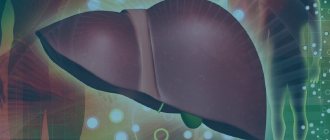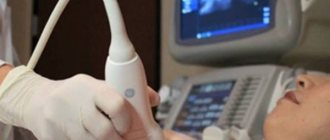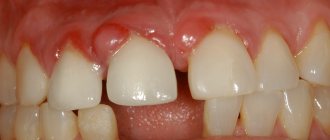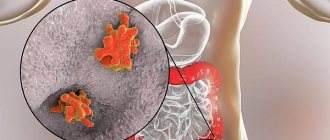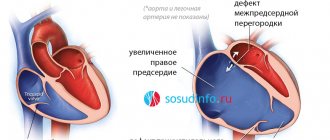Drug-induced hepatitis
- These are pathological changes in liver tissue caused by taking medications. The type of liver damage depends on the properties of the drug, its dose, and the initial condition of the patient.
Clinical and morphological variants of drug-induced hepatopathies are: necrosis of hepatocytes of the III zone of the acinus; necrosis of hepatocytes of the first zone of the acinus; mitochondrial cytopathy; drug-induced liver fibrosis; drug-induced steatohepatitis; acute and chronic drug-induced hepatitis; liver damage as a hypersensitivity reaction; drug tubular, parenchymal tubular and intraductal cholestasis; drug-induced sclerosing cholangitis; drug-induced biliary sludge; liver vascular damage (dilation of sinusoids, peliosis, veno-occlusive disease, obstruction of the portal and hepatic veins), drug-induced liver tumors.
Drug-induced liver damage leads to the appearance of jaundice in 3-10% of patients hospitalized with this pathology, and is also one of the reasons for the development of fulminant liver failure, which kills 2 thousand people in the world every year.
Diagnosis of drug-induced liver damage is based on medical history, clinical manifestations (jaundice); determining the activity of liver enzymes (alanine aminotransferase increases (more than 3 times) and aspartate aminotransferase), bilirubin (increases more than 2 times); as well as on the results of liver biopsy studies.
The outcome of drug-induced liver damage can be recovery, death of the patient, or the occurrence of persistent irreversible pathological changes in the liver requiring transplantation.
Classification of drug-induced liver injuries
Acute drug-induced hepatitis.
Occurs when using anti-tuberculosis drugs, aminoglycosides, antihypertensive drugs, antifungal, antiandrogenic drugs; tacrine, pemolina, clozepam; nicotinic acid preparations. In the liver of patients, necrosis and inflammatory infiltration can be detected. Develops approximately 5-8 days from the start of taking the drug.
Chronic drug-induced hepatitis.
Occurs when using isoniazid, fibrates (clofibrate), minocycline, nitrofurans. Acinar and periportal lesions can be found in the liver of patients; plasma cell infiltrates, fibrosis. Clinically it occurs as autoimmune hepatitis.
Liver damage as a hypersensitivity reaction.
Occurs when using sulfonamides, nonsteroidal anti-inflammatory drugs, antithyroid drugs; quinine drugs, anticonvulsants. Develops 2-4 weeks from the start of taking the drug. Patients present with symptoms of acute hepatitis with severe jaundice; arthritis, vasculitis, eosinophilia and hemolysis. In the liver of patients, one can detect “variegated” necrosis, involvement of bile canaliculi in the process, eosinophilic infiltration of the hepatic parenchyma; formation of granulomas is possible.
Drug-induced tubular cholestasis.
Occurs when using oral contraceptives containing estrogens and gestagens, androgenic and anabolic steroids. Patients are concerned about skin itching (with a slight increase in bilirubin levels). A transient increase in liver aminotransferase levels can be detected. Signs of cholestasis may be detected in the liver (mainly in zone III).
Parenchymal tubular cholestasis.
Occurs when using chlorpromazine, sulfonamides, semi-synthetic and synthetic penicillins, macrolides, histamine receptor blockers, oral hypoglycemic drugs - sulfonylurea derivatives. In patients, cholestatic syndrome may persist for several months and years after discontinuation of the drug. Signs of cholestasis may be detected in the liver (in zones I and III); eosinophil infiltrates, possible formation of granulomas.
Intraductal cholestasis.
Occurs when using benoxyprofen. Patients experience severe jaundice and may develop acute renal failure. In the liver, the ducts and tubules are filled with clots of concentrated bile without an inflammatory reaction in the surrounding tissues.
Drug-induced biliary sludge.
Occurs when using cephalosporins. This type of liver damage may be asymptomatic. In some cases, patients are bothered by attacks of biliary colic. Agglomerates of cholesterol crystals, mucin, calcium bilirubinate and other pigment crystals are found in the liver. These changes are the result of a violation of the physicochemical properties of bile.
Drug-induced sclerosing cholangitis.
Occurs when chemotherapy drugs are administered into the hepatic artery. Patients experience persistent cholestasis.
Drug-induced liver tumors.
Occurs when using hormonal drugs (estrogens, androgens, gestagens) and their antagonists. Variants of this type of liver damage are: focal nodular hyperplasia, adenoma, hepatocellular carcinoma.
Chronic cholestatic hepatitis
Liver disease of a diffuse nature as a result of inflammation along the small bile ducts, stagnation of bile in the liver tissue.
The manifestations and complaints are the same as with other chronic hepatitis, but jaundice is more pronounced, which causes more severe skin itching, sometimes even before the skin turns yellow. Under the skin, in the corners of the eyes, yellow dense spots-xanthomas and xanthelasmas appear. A biochemical blood test shows a higher level of bilirubin, alkaline phosphatase (5 or more times higher than normal), and cholesterol. The principles of dietary nutrition and treatment are the same as for chronic active hepatitis, as well as vitamins A, E, B, Vicasol, to reduce skin itching - drugs that bind bile acids (bilignin, cholestyramine), choleretic.
Etiology of drug lesions
The type of drug-induced liver injury depends on the characteristics of the drug, the patient's condition, and other factors.
- Characteristics of the drug.
- Physicochemical characteristics.
- Dosage form.
- Dose.
- Route of administration.
- Patient's condition.
- Genetic predisposition.
- The nature of pharmacokinetics.
- Age (drug-induced liver damage occurs more often in older people).
- Gender (drug-induced liver damage occurs more often in women).
- Features of the existing pathology (for example, chronic hepatitis B and C).
- Other factors.
- Pregnancy.
- Idiosyncrasy.
- Drinking alcohol.
- Environmental factors.
Clinical signs of toxic hepatitis
Signs of an acute form of the disease
Symptoms of toxic hepatitis are very variable and in most cases depend on the degree of poisoning and on which particular toxic substance provoked the development of the pathological process.
However, there are also characteristic signs that are common to all types of toxic hepatitis:
- fast fatiguability;
- loss of appetite;
- bitterness in the mouth;
- belching;
- bloating;
- pain in the right hypochondrium;
- yellowing of the sclera, skin and mucous membranes;
- increase in body temperature to 37–38 °C.
Many patients with toxic hepatitis develop a rash on the skin, accompanied by itching of varying intensity, urine becomes the color of dark beer, and stool becomes light-colored with a clay consistency. Often, liver damage is accompanied by an increase in the size of the organ, the appearance of small hemorrhages on the skin, bleeding gums and nosebleeds (a consequence of the destructive effect of toxic substances on the walls of blood vessels). In some cases, lethargy or excessive agitation, hand tremors, and spatial disorientation are observed.
Signs of a chronic form of the disease
As the disease becomes chronic, the symptoms of toxic liver damage become less pronounced. Typically, patients complain of the following symptoms:
- periodic pain in the right hypochondrium, worsening after eating;
- bitterness in the mouth;
- decreased performance;
- fatigue;
- flatulence;
- nausea;
- occasional bouts of vomiting;
- stool disorders;
- hepatosplenomegaly (marked enlargement of the liver and spleen).
During remission, symptoms may subside, but during an exacerbation they reappear.
Classification of hepatotoxic drugs
Drugs can be classified based on the degree to which their toxic effects are predictable.
Drugs that have a dose-dependent effect.
The toxic effect of drugs in this group depends on their dose, time of administration, and route of elimination by the body. Therefore, the side effects of these drugs are predictable.
- Antidepressants.
- Sedatives.
- Antiulcer drugs.
- Hormones.
- Antibiotics.
- Anti-tuberculosis drugs.
- Cytostatics.
- Drugs that cause idiosyncrasy.
Idiosyncrasy
is an individual intolerance to a drug, caused by the development of immune-mediated reactions to the drug or resulting from exposure to toxic metabolites that are detected during its biotransformation. Therefore, the side effects of these drugs are unpredictable.
- Non-steroidal anti-inflammatory drugs.
- Antidiabetic agents.
- Diuretics.
- Thyrostatic drugs.
- Antiparasitic agents.
Medicines are divided into groups depending on the mechanism of their damaging effect on the liver:
- Drugs affecting the liver parenchyma (hepatocellular mechanism of action).
- isoniazid (isoniazid tablet).
- methyldopa.
- paracetamol (Efferalgan, Panadol, Paracetamol tablet).
- diclofenac (Voltaren, Ortofen, Diclofenac table).
- Drugs that affect the processes of bile outflow (cholestatic mechanism of action).
- chlorpromazine (Aminazine).
- erythromycin (Erythromycin tablet).
- Anabolic steroid.
- Thiabendazole.
- imipramine (Melipramine).
- amoxicillin/clavulanic acid (Amoxiclav, Augmentin).
- Drugs with a mixed mechanism of action on the liver.
- Sulfonamides.
- Nitrofurantoins.
How I decided to take generic treatment
And I took a break. I was observed for about another year at the gastrocenter. During this time, my maintenance treatment changed somewhat: the doctor replaced an expensive hepatoprotector drug with a cheaper drug and additionally prescribed several courses of anticholecystitis therapy to maintain gallbladder function. It turns out that in most cases any pain in the liver area is caused by the gall bladder. I only bought pills - doctor’s consultations and all examinations were free under the compulsory medical insurance policy.
At the same time, at this time I was actively surfing the Internet in search of information about a new treatment. I found out that these revolutionary tablets act as RNA polymerase inhibitors. They inhibit the enzyme necessary for the virus to multiply. I studied a lot of specialized forums with reviews about providers' websites, treatments and results. Everything looked like the treatment was really working.
I understood that something needed to be done about the pain. The viral load continued to grow, the symptoms also caused more and more inconvenience, and it was clear how it would all end.
And in September 2021, I finally made up my mind, saved up money for treatment and went to the doctor again, took a genotype and viral load test. Based on the test results, the hepatologist selected the drug Ledihep for me, an Indian generic of the original drug Harvoni. The active ingredients are two polymerase inhibitors: sofosbuvir and ledipasvir. The course of treatment was 12 weeks, one tablet per day. It was necessary to buy 3 jars of the drug, 28 tablets each.
I read specialized forums and, based on reviews, chose the site where I planned to place an order, but just in case, I also contacted the person on the doctor’s business card. My costs if ordering through him would be $300 higher compared to ordering through the website. I figured I could handle it myself and refused the services of a private contractor.
This is what the main page of the site where I bought medicine looks like. Source: HCV24
Diagnostic methods
- History taking
- Physical examination
- Laboratory research
- Instrumental diagnostic methods
- Diagnostic algorithm
- Diagnosis of drug-induced liver damage is based on medical history, namely:
- Information about the drug the patient was taking.
- Dose of the drug.
- Duration of taking the drug.
- Information about previous use of the same drug and reactions to it.
In addition, it is important to establish a temporal relationship between the identified clinical and laboratory data and the use of the drug.
It is necessary to evaluate the dynamics of the identified clinical and laboratory data after discontinuation of the drug, as well as to study the patient’s condition after repeated (accidental) administration of the same drug.
To confirm the diagnosis and carry out differential diagnosis, it is important to conduct a morphological examination of the liver biopsy.
In addition, additional examination of the patient is carried out to exclude other liver diseases.
Diagnostic strategy and management tactics for drug-induced hepatitis
Professor Drapkina O.M.: – The next message will be made by Professor Tatyana Evgenievna Polunina. "Strategy for diagnosis and management of drug-induced hepatitis." We heard from the oncologist today, and now we’ll hear from the gastroenterologist.
Professor Polunina T.E.: – Drug-induced hepatitis is liver damage that occurs as a result of the toxic effect of drugs on liver cells with the development of inflammation and even necrosis in them.
More than 1000 drugs have potential hepatotoxicity. Jaundice occurs in 3-5% of hospitalized patients and is associated with medications. 10% of cases of acute liver failure are caused by medications.
Drug-induced lesions in the epidemiology of liver diseases cause from 4% to 28% of lesions, although the statistics are unreliable. I would like to draw your attention to the fact that in the epidemiology of acute liver failure, drugs such as paracetamol, halothane, anti-tuberculosis, narcotic drugs, as well as herbal tinctures cause a fairly high percentage, 78% of liver failure.
Here is a list of medications that have caused acute liver failure leading to liver transplantation. Please note that anti-tuberculosis drugs, antiepileptic, antibacterial and antifungal drugs, statins, in particular atorvastatin, and other statins are hepatotoxic drugs. Also non-steroidal anti-inflammatory drugs, and isolated cases occur with halothane, amitriptyline, methotrexate and the drugs that have already been discussed today.
Registered cases of drug-induced liver injuries are represented by countries such as Sweden, Spain, USA, Korea, Japan from 1997 to 2007. And you see that the structure of the studies included both state registration of side effects of drugs, as well as prospective and retrospective studies. There was an advantage in the type of medicinal lesion, the hepatocellular type over the mixed and cholestatic type. The age category of patients was most often above 50 years. Advantages in gender - these were ladies, women, and they were hospitalized with a detailed picture of drug-induced liver damage. There was also chronicity of drug-induced liver damage. The mortality rate when using cytostatic drugs is also quite high.
Drug-induced liver damage, in its clinical manifestation, can range from transient increases in aminotransferases to, respectively, cirrhosis and acute hepatitis, accompanied by acute liver failure, and can imitate various liver injuries. You see: vascular reactions, granulomatosis, hepatic steatosis, sludge syndrome, neoplastic reactions.
I would like to draw your attention to the fact that drug-induced liver damage depends not only on age and gender, but also on concomitant diseases, as well as on nutrition. Weight loss, obesity, alcohol intake, genetics, pregnancy, potentially hepatotoxic drugs, but a very important point is polypharmacy. Prescribing more than 5 drugs to a patient has a high risk of developing drug-induced liver damage.
I would like to draw attention to the mechanism of hepatocyte damage. On this slide you see a normal hepatocyte and its membrane. The hepatocyte membrane suffers from various damages, in particular calcium homeostasis and actinomycelial disturbances. And you see that the structure of the hepatocyte membrane is damaged, actin fibrils also damage the bile ducts and bile ducts in some cases. And you see that in a number of cases, bilirubin metabolism is disrupted, in particular this occurs with cholestatic hepatitis, and the transport pump of proteins such as MRP is disrupted. Hepatocellular liver damage occurs most often in the endoplasmic reticulum when it encounters cytochrome P-450, and a drug that does not fit various cytochromes, and there are more than 50 of them, is like a key to a lock. In some cases, we have a so-called immunological response and cytokines are activated, and, accordingly, immunoallergic damage occurs, which triggers a cascade of necrosis, in particular apoptosis, and the tumor necrosis factor and fas-ligand increase.
A separate type of hepatotoxicity is associated with damage to mitochondria. And this is a very common type of hepatotoxicity. In particular, free fatty acids and triglycerides accumulate, metabolism in the mitochondria is disrupted, and death and DNA damage occurs in the mitochondria.
You see the phases of drug metabolism, and draw your attention to the fact that there are 3 metabolic phases of the effect on the hepatocyte. And in the first phase - this is the hydroxylation phase, which takes place in the endoplasmic reticulum, you see that cytochrome P-450 carries out hydroxylation, and toxic metabolites appear. They are located precisely in the liver tissue, and therefore these toxic metabolites are most often the cause of the development of drug-induced liver damage.
The next phase is the phase of biotransformation of drugs, which is carried out by various enzymes, and in particular glutathiones, and in particular glucuronyl transferase. These conjugates that arise during binding and the biotransformation effect must be excreted. They are excreted through urine and bile, and the most important point is the excretion of toxins. If excretion of toxins does not occur, then the metabolites damage mitochondria, membrane nuclei, and the problem of drug-induced liver damage arises.
Direct damage to the hepatocyte is most often halothane, which is not currently relevant. Mitochondrial toxicity, immune-mediated hepatotoxicity, direct damage to cholangiocytes, effects on transport pumps, activation of apoptosis are the most modern mechanisms of liver damage, and they depend on a number of factors. Not only dosage forms, not only the dose of the drug, sometimes there is an overdose of drugs that are not designed for a kilogram of weight, but also the route of administration of the drug. Intravenous or tablet form, or the drug is administered in suppositories - it matters.
Genetic predisposition, given that cytochrome P-450 is a genetic dependence, the most important point is the characteristics of the patient. The nature of the pharmacokinetics of the drug, whether the drug is excreted through the biliary tract, liver or through the urogenital tract. Age, gender and characteristics of concomitant pathologies. Such and other factors such as pregnancy, idiosyncrasy, alcohol intake and environmental factors are always extremely important.
Drug interactions, and in particular drug inducers, such as barbiturates, rifampicin, steroid hormones, are important in drug interactions, and can lead to a decrease in effect and, accordingly, to an increase in effect.
We see a dose-dependent effect when taking drugs such as antidepressants, sedatives, tranquilizers, antiulcer drugs, hormonal drugs, and cytostatics. Idiosyncrasies that are unpredictable are non-steroidal anti-inflammatory drugs, antidiabetic drugs, diuretics, thyreostatics and antiparasitic drugs.
I would like to draw your attention to the fact that drug-induced injuries occur in different types. And in particular, cholestasis, it can be tubular, tubular-parenchymal, ductular, sludge syndrome. Occurs depending on the dose of the drug. And maybe without the icteric form. Jaundice can be of varying degrees of severity; even an attack of biliary colic is possible with pseudosurgical symptoms. And it occurs on the above-mentioned drugs that are presented here.
Cytolysis. Cytolysis occurs in various zones of necrosis, in particular zone 3 of necrosis, where the endoplasmic reticulum is located, occurs as steatohepatitis, and it is reversible, dose-dependent. Moderate jaundice – this means an increase in bilirubin levels of more than 2 norms. Acute hepatitis, which is accompanied by bridging necrosis and various disorders of pigment metabolism. Occurs on statins, anti-tuberculosis drugs, antipsychotics, antifungal drugs, antidepressants and diuretics.
Allergic reactions are often accompanied by granulomatosis, and occur on antiarrhythmics, sulfonamides, and nonsteroidal anti-inflammatory drugs.
Fibrosis and portal hypertension - with cytolysis these are real things. They occur on antithyroid drugs, anti-gout drugs, and anticholinesterase drugs.
The algorithm for diagnosing drug-induced hepatitis is the most complex diagnostic option, because it is undoubtedly associated with a huge range of diseases, which we must differentiate. Undoubtedly, it is very important to exclude acute viral hepatitis, because the inpatient stay of a patient with acute viral hepatitis and a patient with drug-induced hepatitis are, as it were, different points of stay. Undoubtedly, it is important to have a clear position: surgical treatment is necessary for the patient or is it drug therapy that is carried out in a therapeutic hospital. Undoubtedly, the patient’s alcohol history, the number of medications the patient takes, previous diseases, hereditary diseases, and severe heart diseases are clarified. And a question that is undoubtedly related to the collection of anamnesis.
Biochemical blood test, which includes not only the expanded liver spectrum, which the previous lecturer spoke about in detail, but also various storage diseases. Therefore, markers of viral hepatitis, as well as viruses such as Epstein-Bar, cytomegalovirus, herpes virus types 1 and 2, undoubtedly need to be checked, and ferritin - iron metabolism, etc., we must do.
I would like to draw attention to the classification, which has already been announced today, by the International Council and divisions into hepatocellular, cholestatic, mixed type, acute damage is supplemented by fulminant hepatitis and severe hepatitis, which are associated with impaired prothrombin and hepatic encephalopathy. In the diagnosis of drug-induced liver damage, instrumental diagnostic methods are undoubtedly important. In particular, ultrasound diagnostics, computed tomography, which makes it possible to exclude cholelithiasis, tumors, and strictures. Accordingly, against the background of severe infectious diseases - opisthorchiasis, salmonellosis - it is necessary to carry out differential diagnosis, because in some cases there are concomitant reactive hepatitis. And to clarify the exclusion of tumor processes, alcoholic lesions, benign hyperbilirubinemia, active hepatitis, viral hepatitis, drug-induced hepatitis is identified as an exclusion disease.
On this slide you see various morphological changes in the liver tissue. In particular, the first slide under the letter “A” shows a normal lesion, a normal structure of the liver tissue. On slide “B” you see damage by trobletazone, balloon degeneration of hepatocytes. Slide “C” shows cholestatic liver damage. On slide “D” - vanish syndrome, after cholestatic hepatitis against the background of drug-induced damage. On slide "E" you see paracetamol necrosis. With an overdose of paracetamol, with alcohol intake, acute centrilobular necrosis, which led to fairly high doses of the drug. And on slide “F”, you see balloon degeneration and fine fatty infiltration, which is associated with the patient taking the drug didodazine during treatment for HIV infection.
Pathogenetic therapy of drug-induced liver damage. Undoubtedly, it is necessary to exclude exposure to a toxic drug. The main method of treatment is to administer Essentiale preparations from 5 to 10 ml parenterally for 1-2 weeks, followed by switching to oral administration of Essentiale up to 2-3 capsules per day until laboratory signs normalize. If we have autoimmune processes, then glucocorticosteroids are included according to the scheme presented here, and ursodeoxycholic acid 10-15 mg per kilogram of weight for 1-2 or more months.
I would like to draw your attention to the fact that in the presence of steatohepatitis, undoubtedly, and steatosis, parenteral administration of Essentiale is administered for 10 days in the presented doses. If we have cholestasis, then a drug from the S-adenomethionine group is administered intravenously in therapeutic doses, combination with ursodeoxycholic acid is possible, and ursodeoxycholic acid can also be administered separately. For liver fibrosis, continue taking “Essentiale” 2 capsules 3 times a day.
I would like to draw your attention to the fact that the review on the use of essential phospholipids contains the latest data from foreign literature, this is data presented by Karl-Josef Gundermann, Anna Keinker and Erwin Kuntz. This is data on the survey, the latest desires that we present in the literature.
The main mechanisms of action of “Essentiale”: restoration of cell membranes, antioxidant effect, antifibrotic effect, normalization of lipid metabolism, normalization of detoxification function. Here is a microfilm based on the work of “Essentiale” on the liver structure, specifically on the functional state of the liver. It is known that the length of hepatocyte membranes is 33 thousand square meters. And when there is an impact, fatty infiltration, alcohol, drug infiltration, then liver steatosis occurs and membrane damage occurs. It is phospholipids that make it possible to restore membrane fluidity and restore the structure of the hepatocyte membrane. By restoring the hepatocyte membrane, we achieve normalization of functions, such as protein function, lipid function, and, accordingly, the functions of enzymes that are located and attached to the hepatocyte membrane. And thus, the regenerative ability of the liver itself is obtained. Accordingly, regenerative proliferation of hepatocytes is stimulated, which makes it possible to compensate for liver function and increase patient survival.
I would like to draw your attention to the fact that “Essentiale” in hepatology is taken for a long time, and is recommended for fatty infiltration of the liver, alcoholic hepatitis, toxic liver damage, chronic hepatitis and the prevention of cholelithiasis. "Essentiale" is used for a long time. And in conclusion, I would like to say that the main conclusions and practical recommendations are that iatrogenic liver damage most often occurs when using various medications, in particular antibiotics, antifungal drugs, and cytostatics. Clinical variants of the course of drug-induced liver damage may resemble the picture of an “acute abdomen” and occur with symptoms of asthenia and dyspeptic disorders. The algorithm for diagnosing drug-induced injuries is based on the consistent exclusion of causes of iatrogenic liver damage.
The detection of iatrogenic liver damage is most often carried out, unfortunately, against the background of a detailed clinical picture, and is accompanied by jaundice and hepatomegaly. Prevention of drug-induced hepatitis is based on the prescription of hepatoprotectors, in particular Essentiale N. Treatment of drug-induced liver injuries is based on the abolition of hepatotoxic drugs, the impossibility of a break if hepatoprotectors are prescribed, in particular Essentiale N.
In conclusion, I would like to say that the liver is a wonderful organ that regenerates, and we currently have the opportunity to treat it with good drugs. Thanks a lot!
